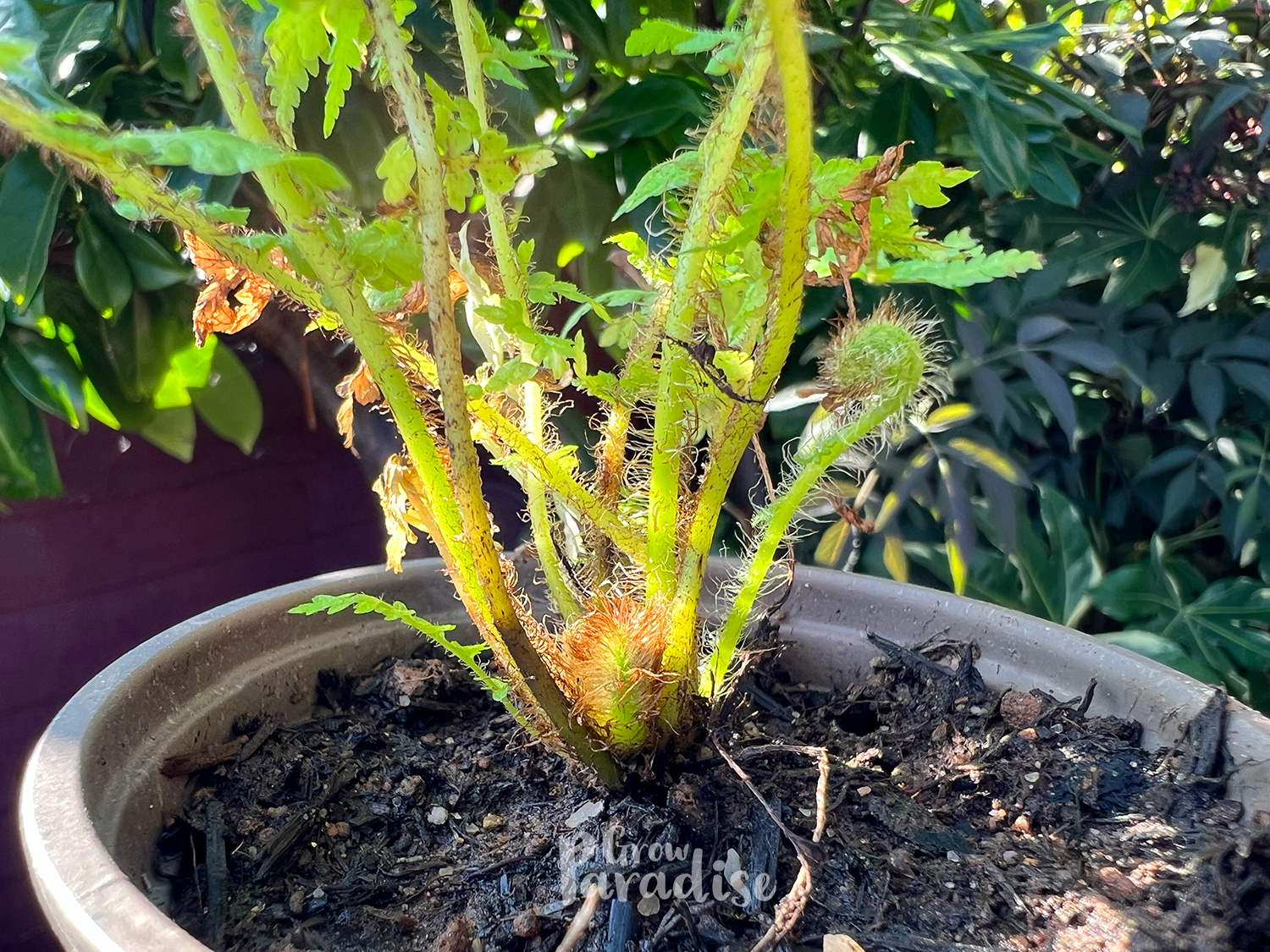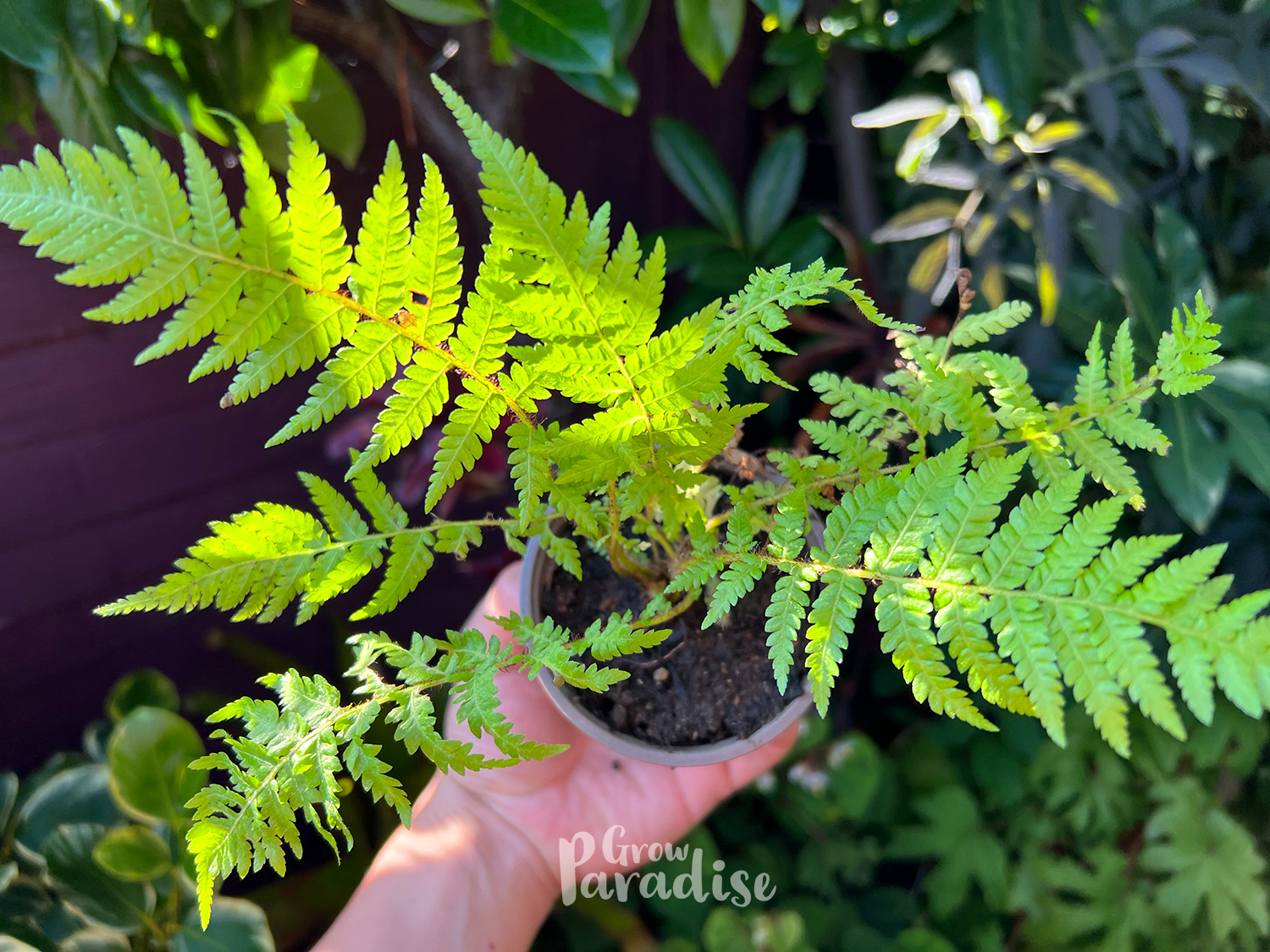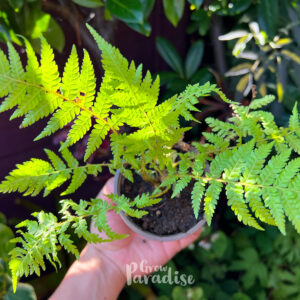Plant Type:
Tree Fern
Cyathea cooperi is a fern that will grow a tall and narrow trunk.
Cold Hardiness:
Half-hardy
Cyathea cooperi can tolerate low temperatures in dry conditions. However, leaves will be damaged in light frosts and freezing temperatures. We would recommend protecting Cyathea cooperi with fleece in severe cold weather.
Eventual Height:
5m
This tree fern will form a tall fibrous trunk as it matures, enabling it to reach an incredible height of 5m. Cyathea cooperi is surprisingly fast growing in comparison to the other popular tree fern, Dicksonia Antarctica.
Light requirements:
Partial shade
Give Cyathea cooperi partial shade to promote the healthiest growth. Too much sunlight can scorch the fronds and too little sunlight will stunt its growth.
Water Requirements:
Regular when growing
Cyathea cooperi prefers its soil to be kept moist during the growing season and drier in colder weather.
Caring for this plant:
Spring & Summer: Water frequently and feed with a liquid high nitrogen fertiliser for maximum growth. Ensure the delicate fibrous roots have good drainage.
Autumn & Winter: Keep the root zone drier to prevent rot. Either store the plant at a minimum temperature of 5ºC or wrap with horticultural fleece in-situ.


















